Power Query: It’s Good to Share(Point) Part 8
13 November 2024
Welcome to our Power Query blog. This week, I transform the data from a SharePoint list.
In this series, I am considering how to access data on SharePoint. SharePoint is used by many companies to store organised data which may then be accessed and shared throughout the organisation. I started with a single file and then moved on to consider combining data in a SharePoint folder.
Last time, instead of a folder, I looked at a SharePoint list:
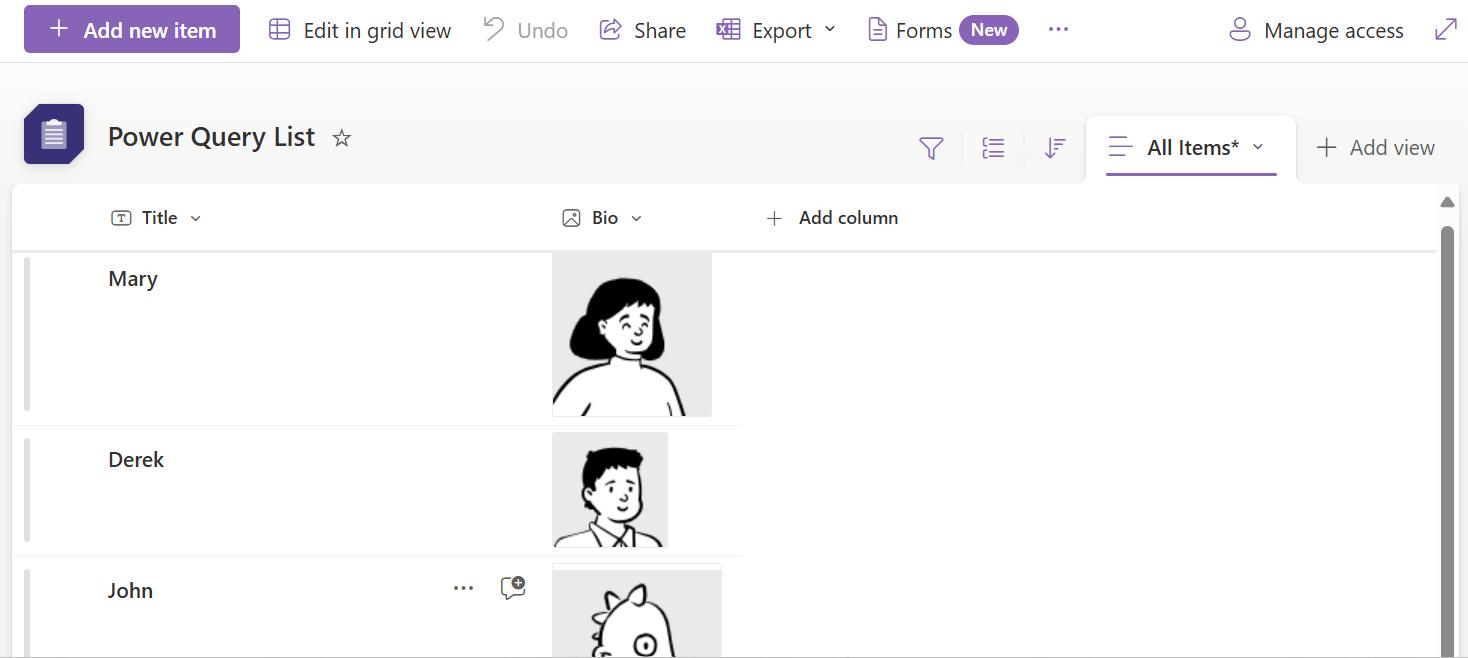
Along with the flattering pictures, the salespeople are responsible for creating expense files and these are linked as attachments. I would like to extract a table with the attached expenses and the responsible salesperson. Regular readers will not be surprised to discover that the expense files are CSV files, I’m sure!
Last time, I accessed the SharePoint site, and selected my list:
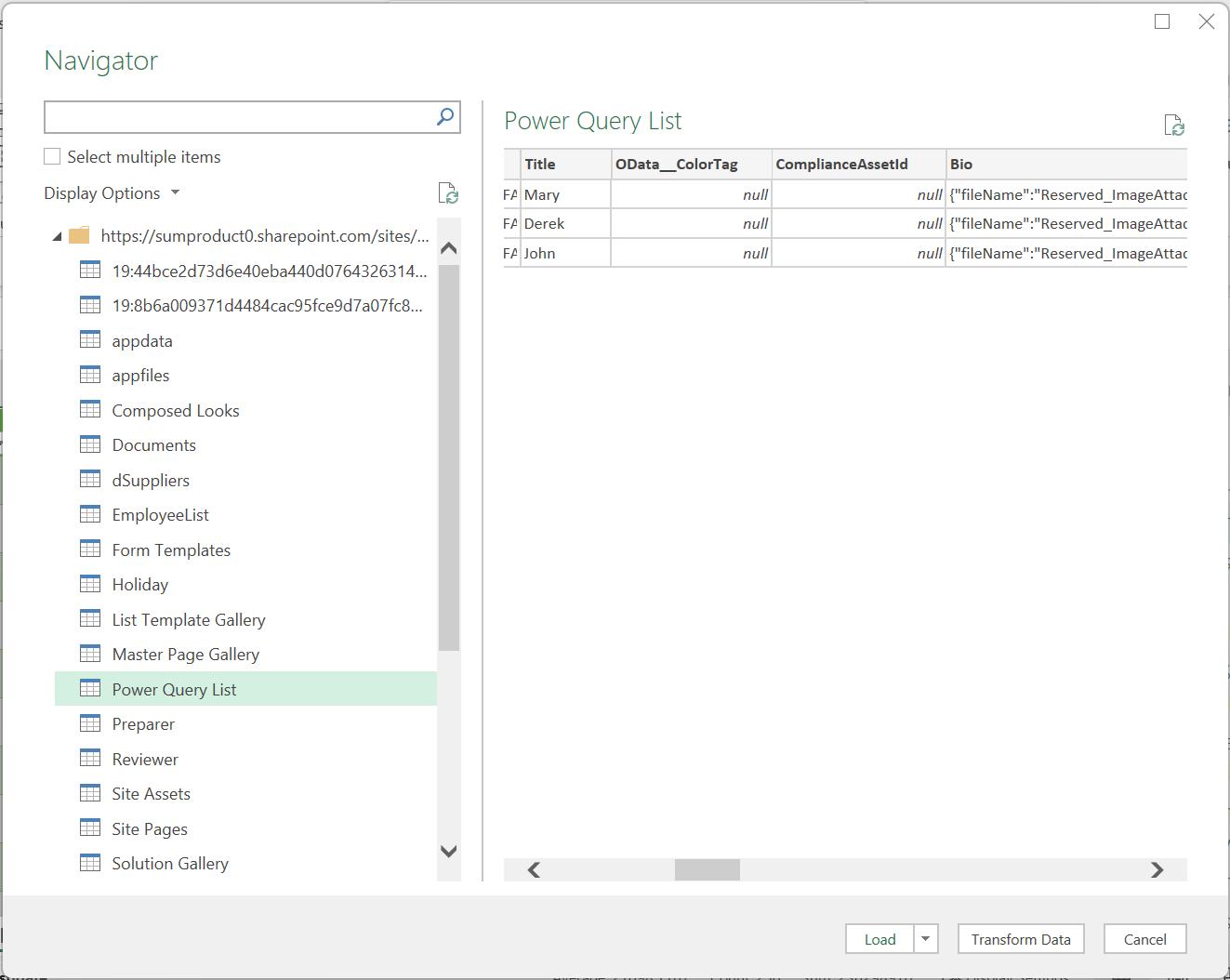
I chose to ‘Transform Data’ and selected the columns I wanted to keep:

Next, I need to extract the expense data from the tables. Before I extract any data, I click in the space next to a table to see what is in the columns:
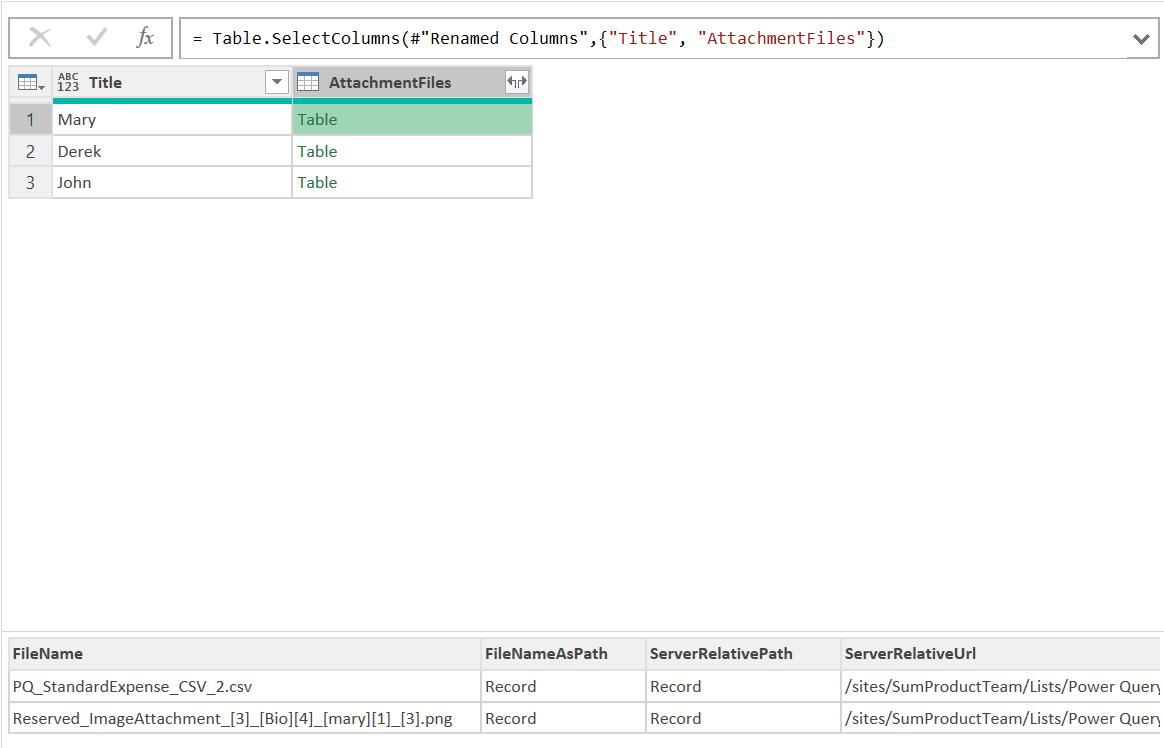
Now I can see which data I need; I begin by using the expand icon next to the title of AttachmentFiles:
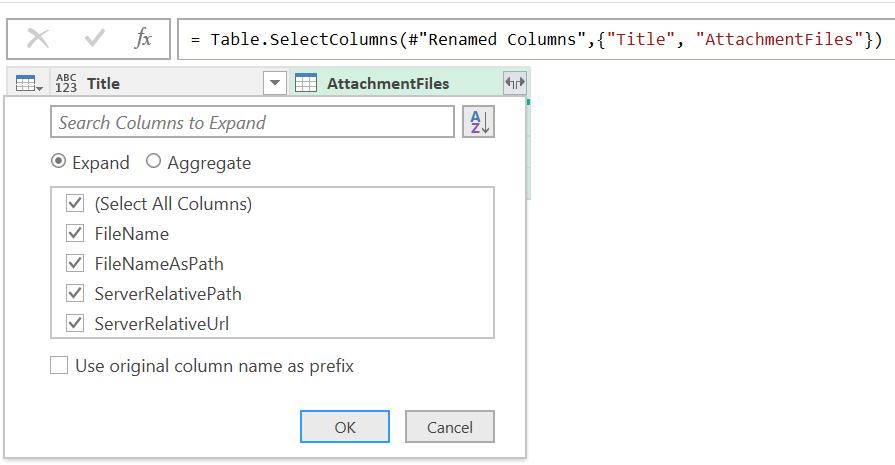
I know from the previous ‘peep’ that I need the data in FileName:

I see that I have different data types here. I only want the CSV files. I begin by extracting the data after the full stop, or period, to a new column. On the ‘Add Column’ tab, I choose to Extract ‘Text After Delimiter’:
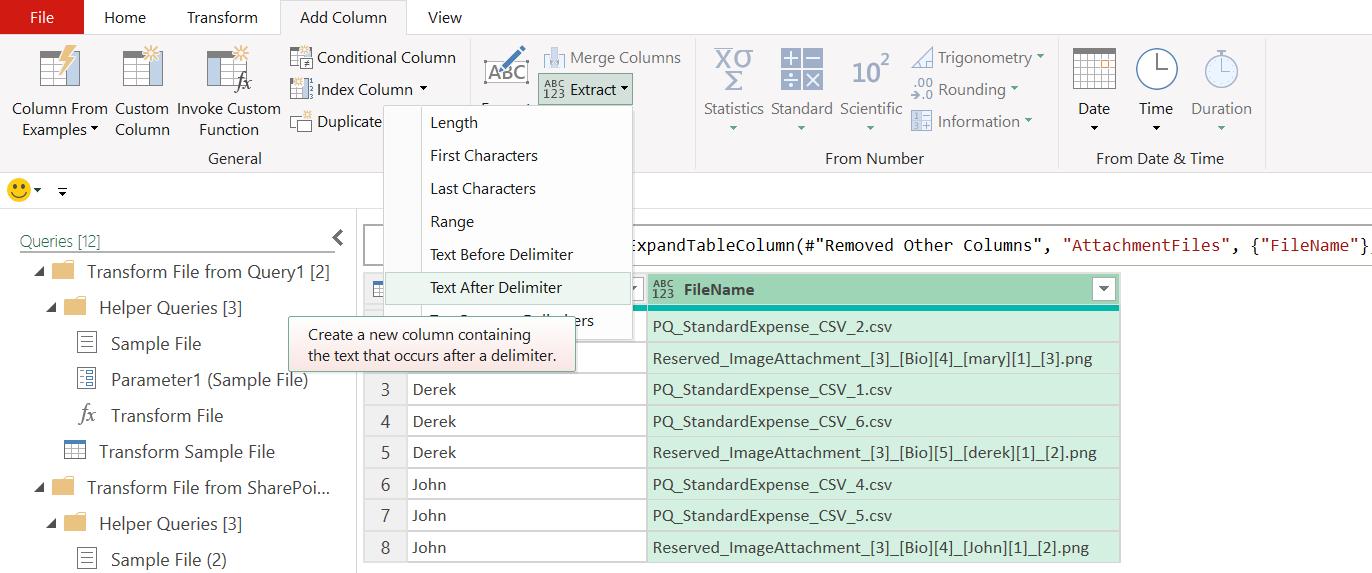
I choose the full stop or period as the delimiter:
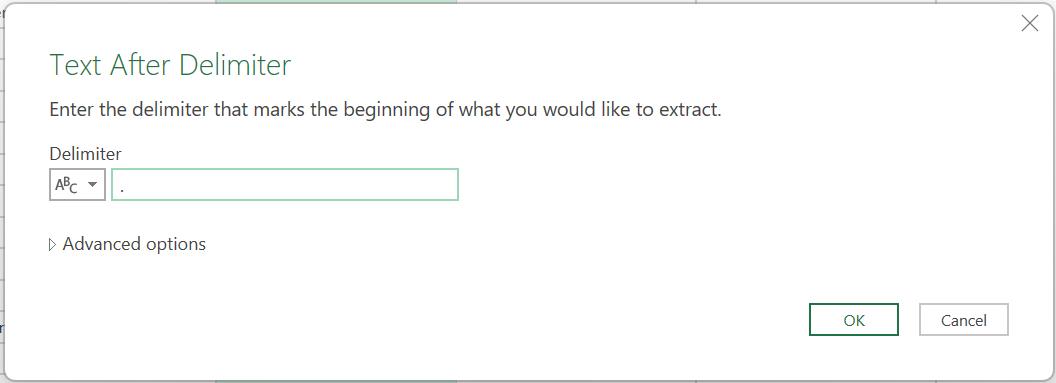
This gives me a new column with the extension,. To ensure I pick up any files with extension csv or CSV, I transform this column to UPPERCASE:
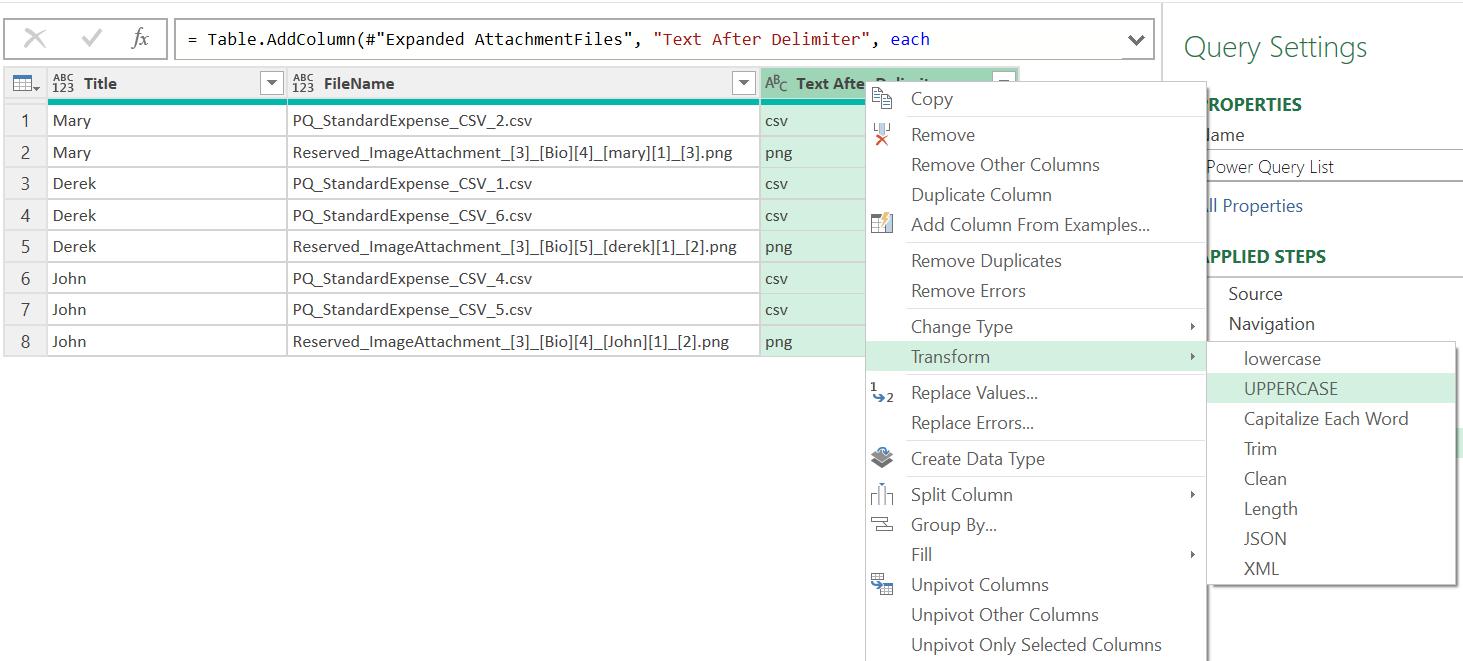
I may now filter to select the CSV files:
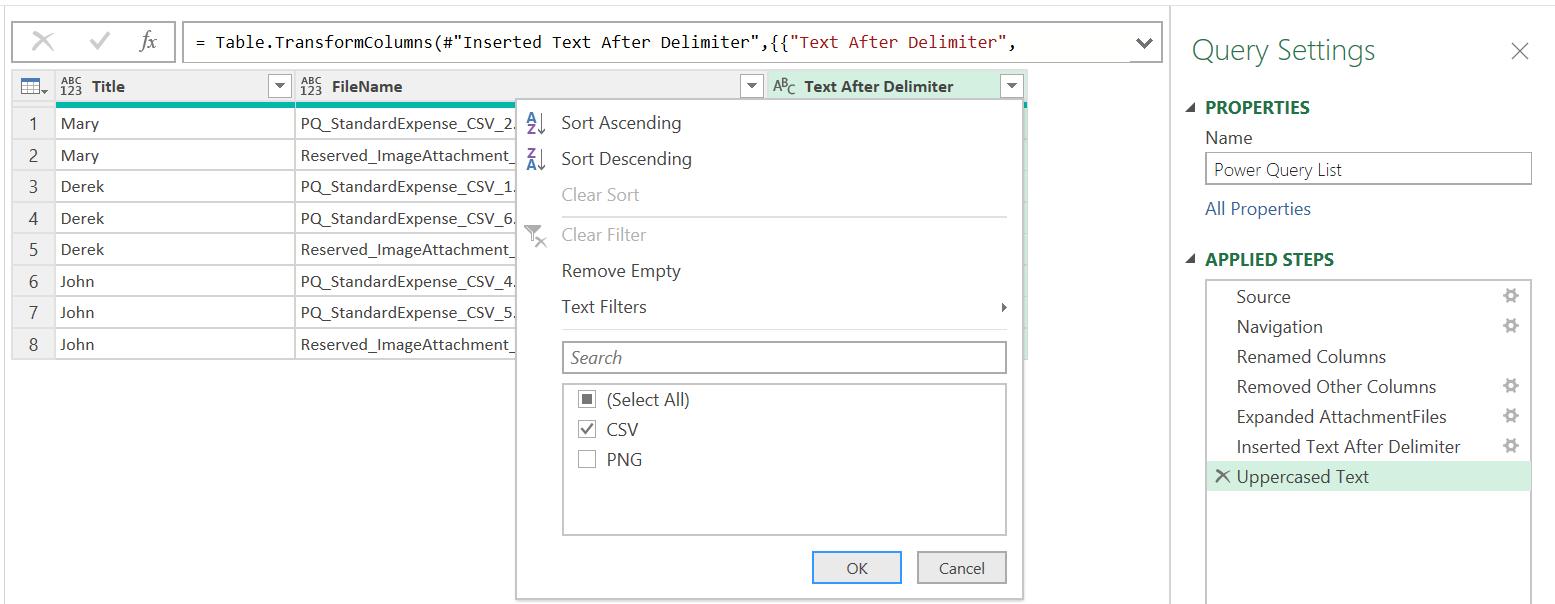
I could add further filters to ensure that I only had the expense data if I had other CSV files attached, but this is sufficient for now. I remove the Text After Delimiter column that I have created:
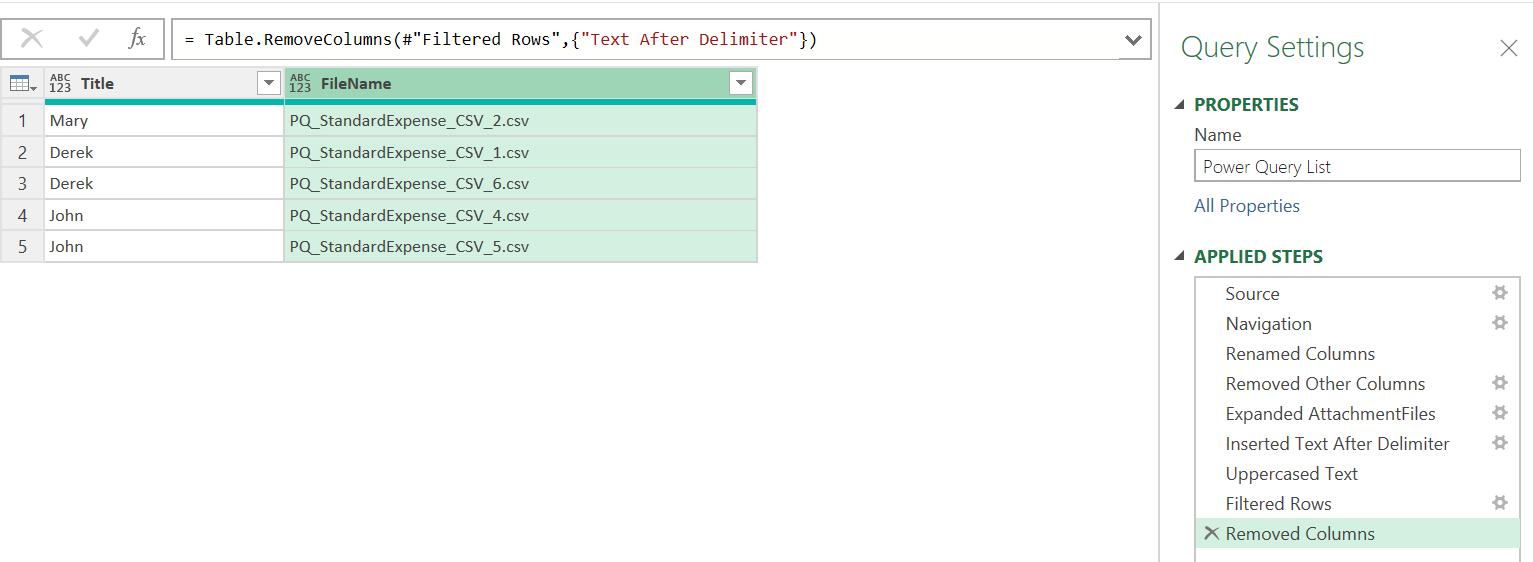
I have the data I wanted, and I may use this to merge with other expense queries.
Come back next time for more ways to use Power Query!

